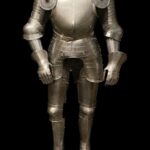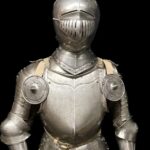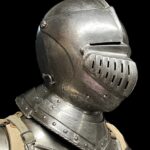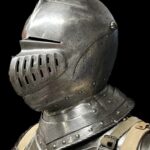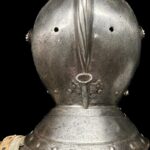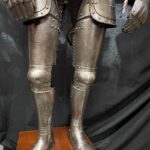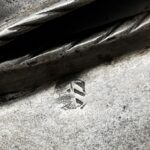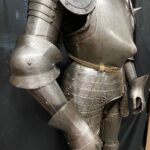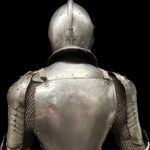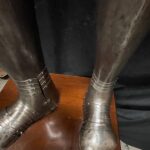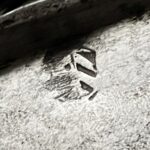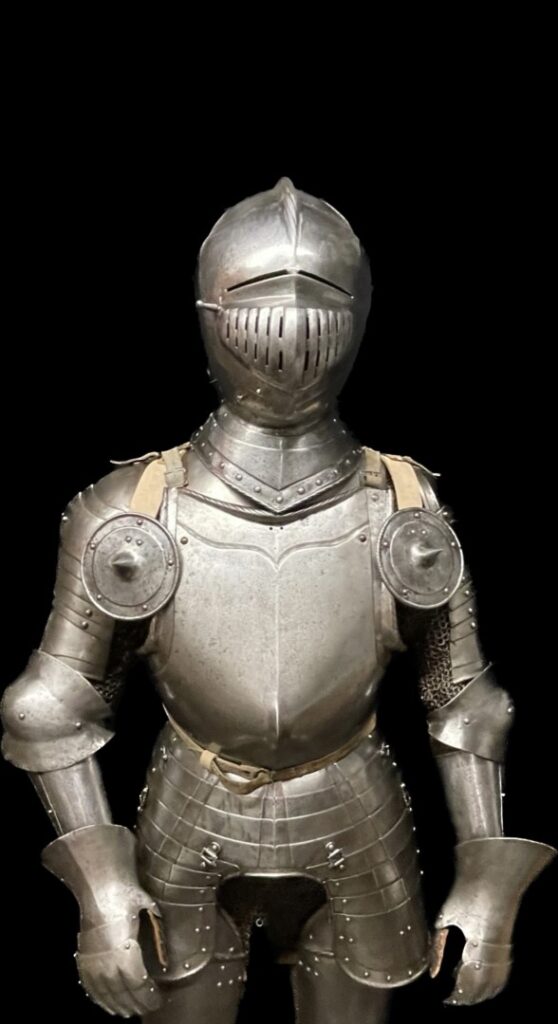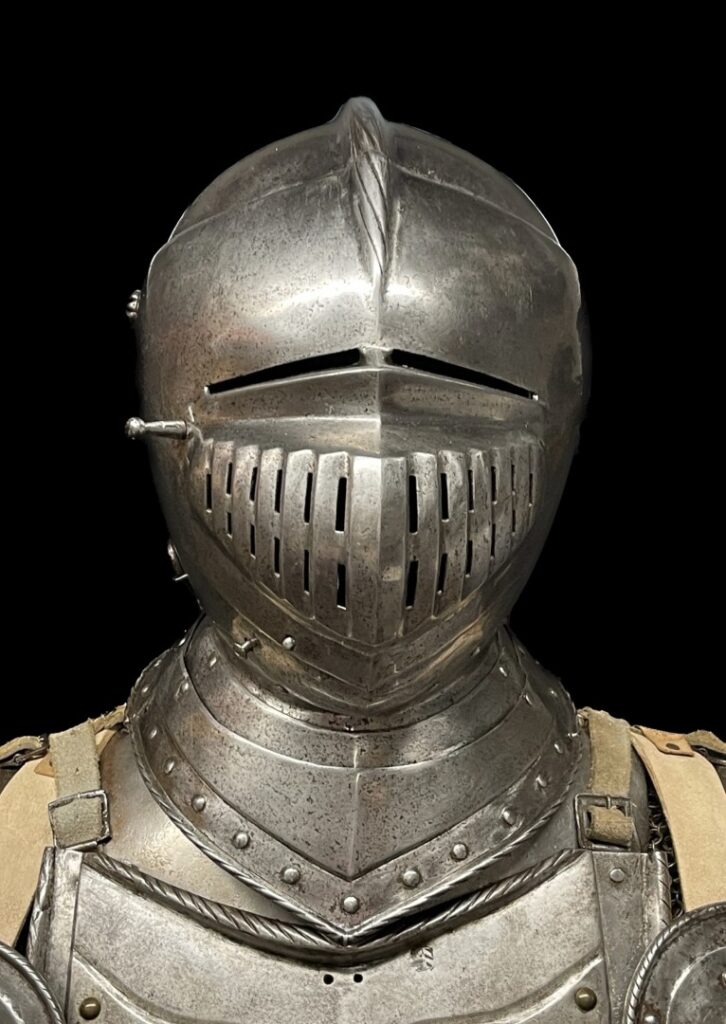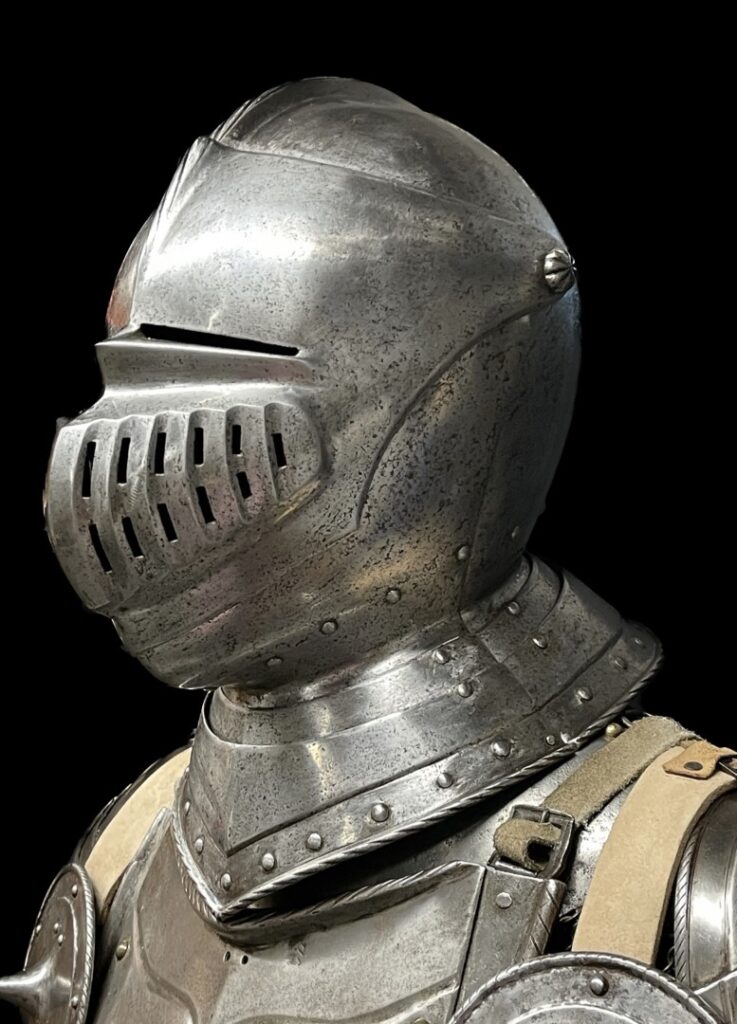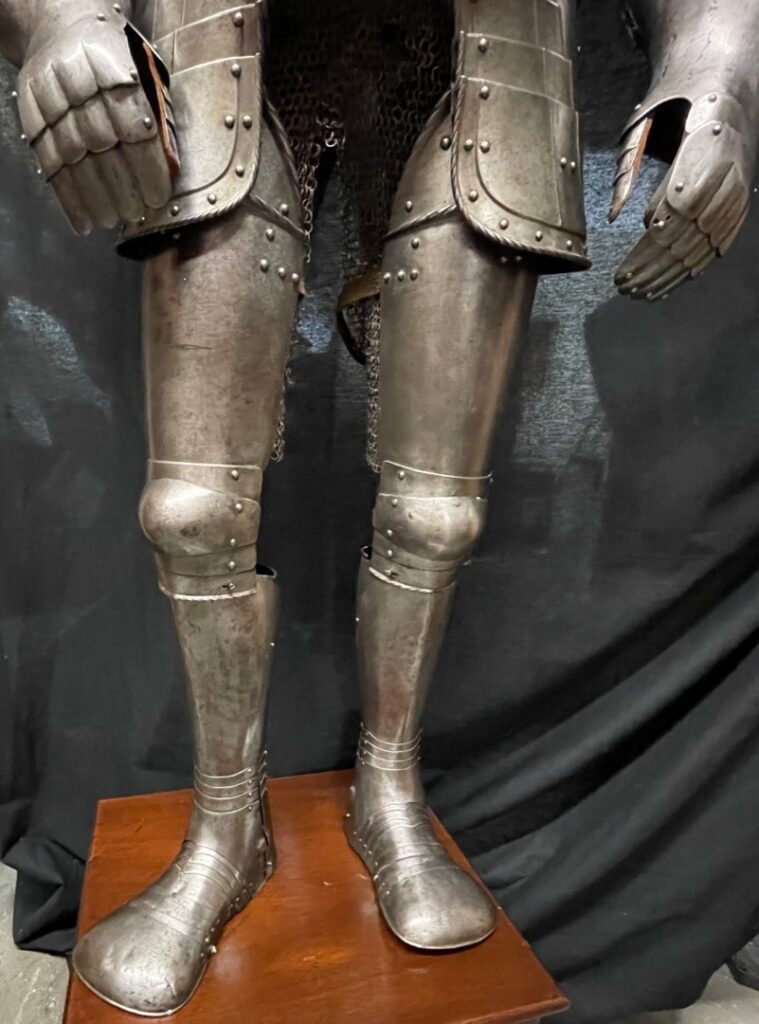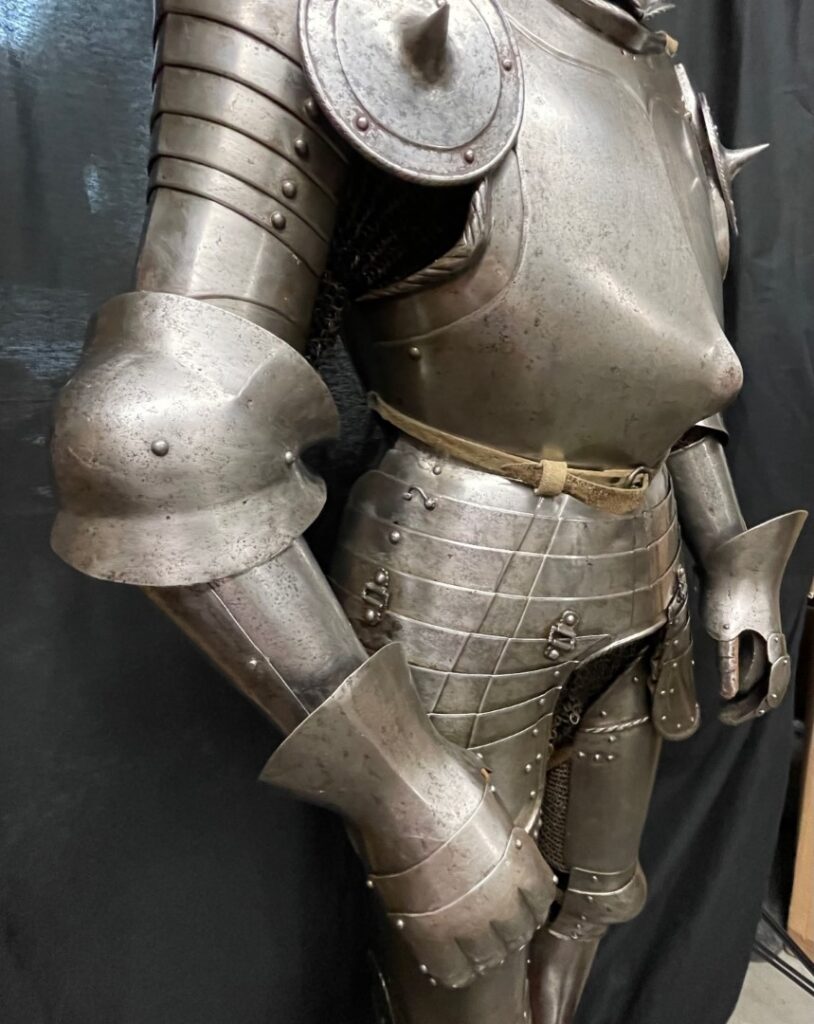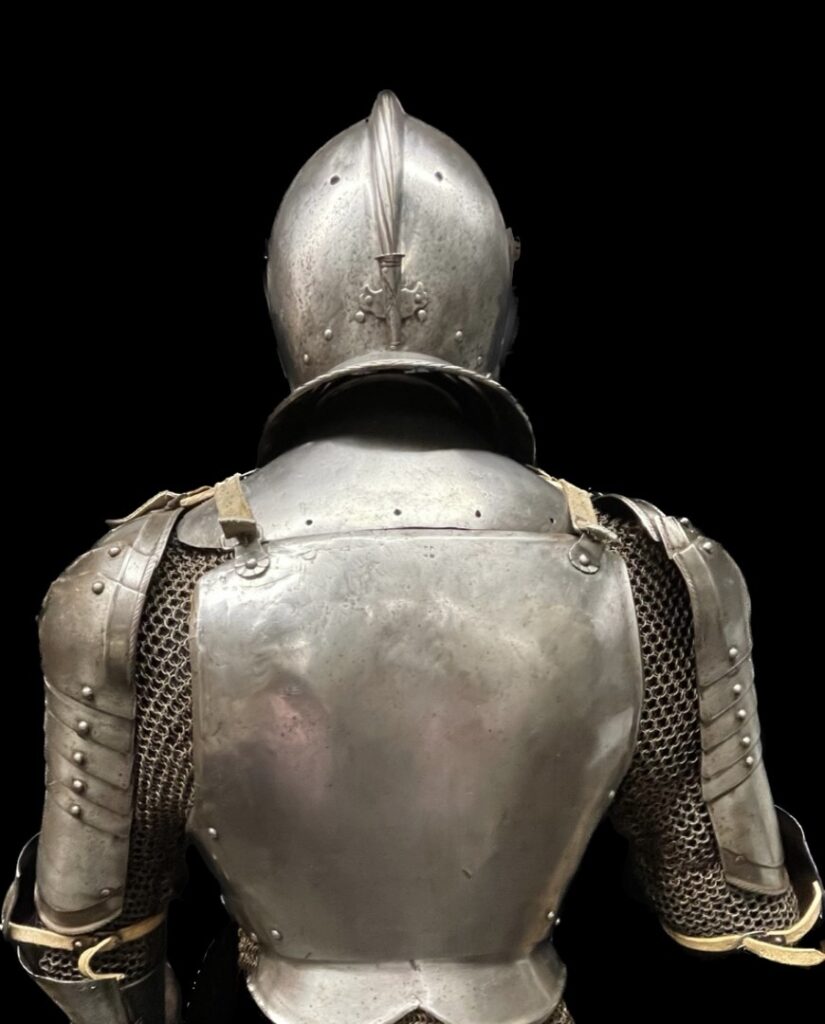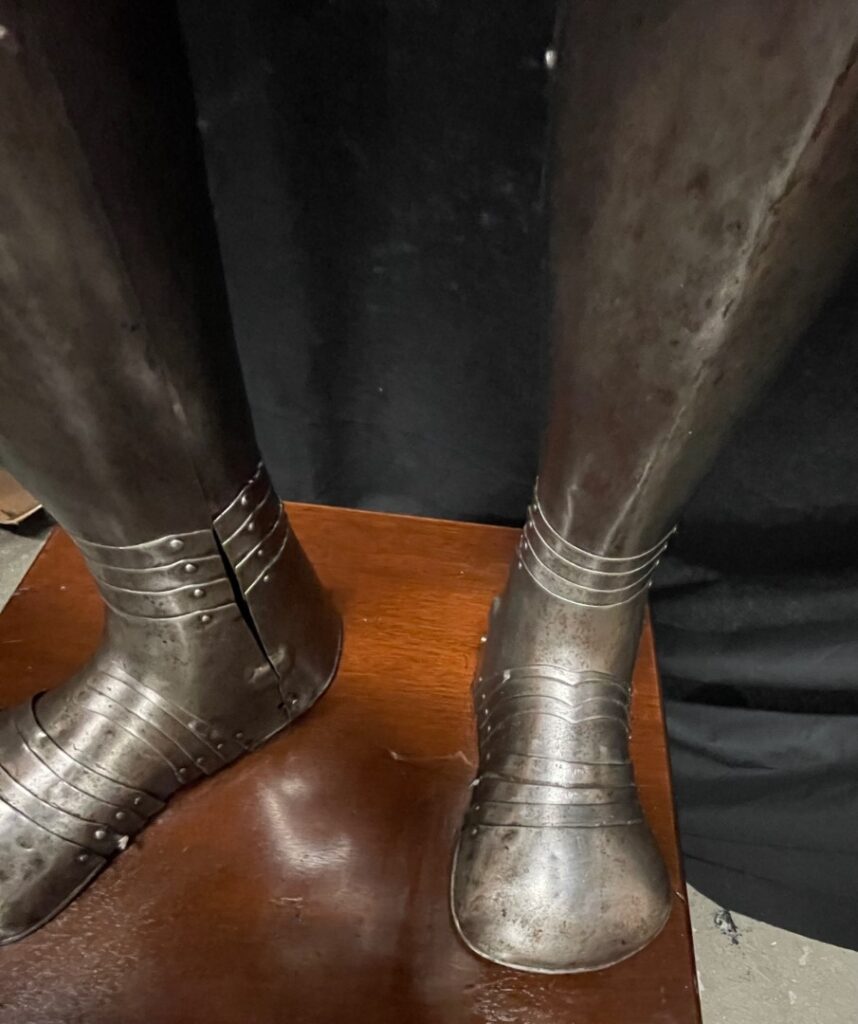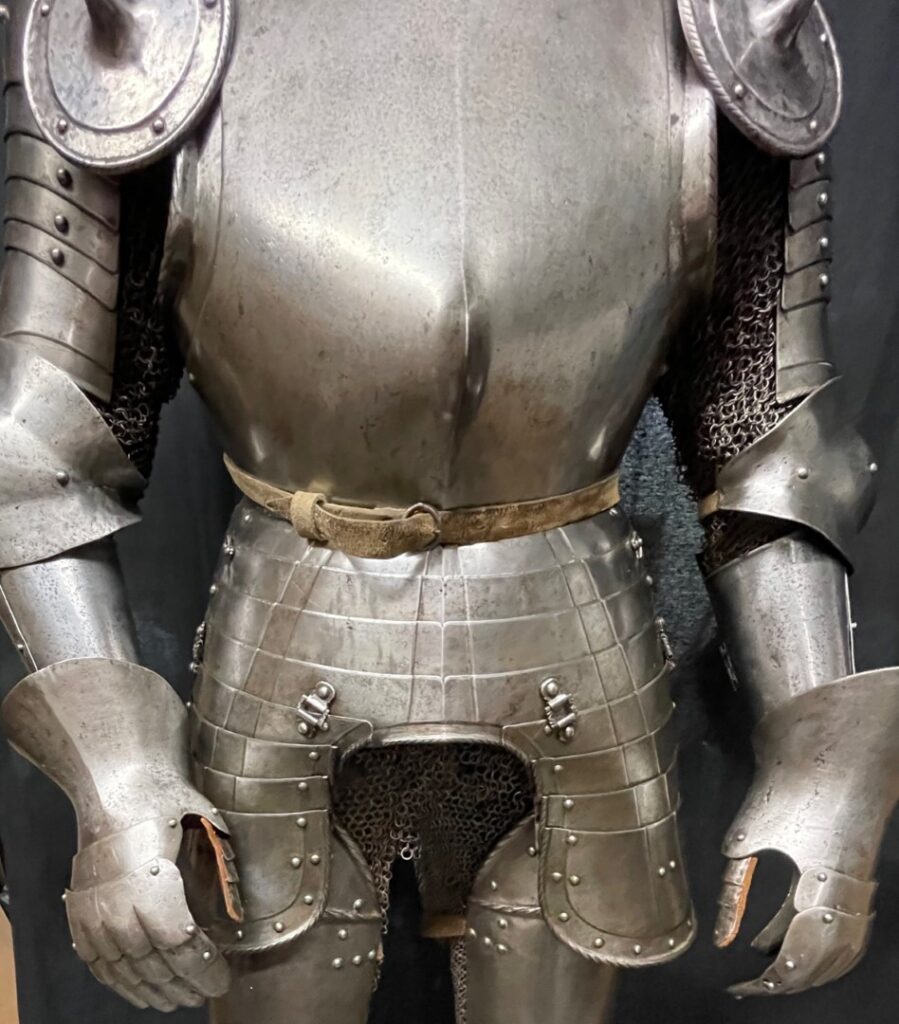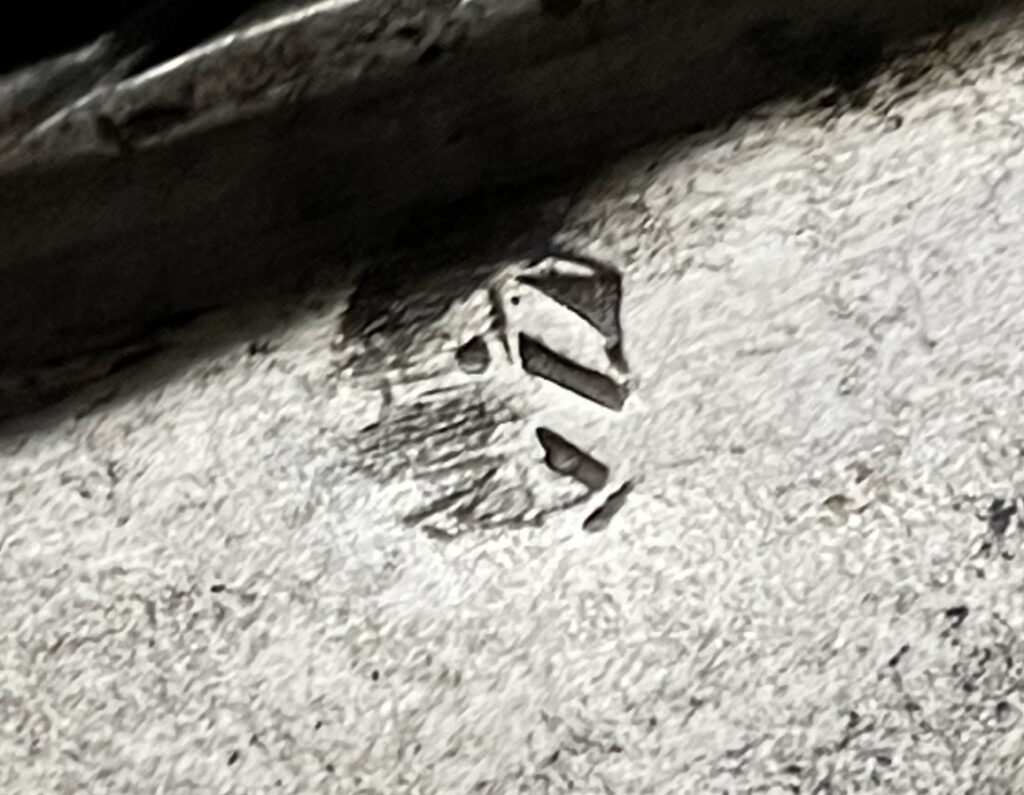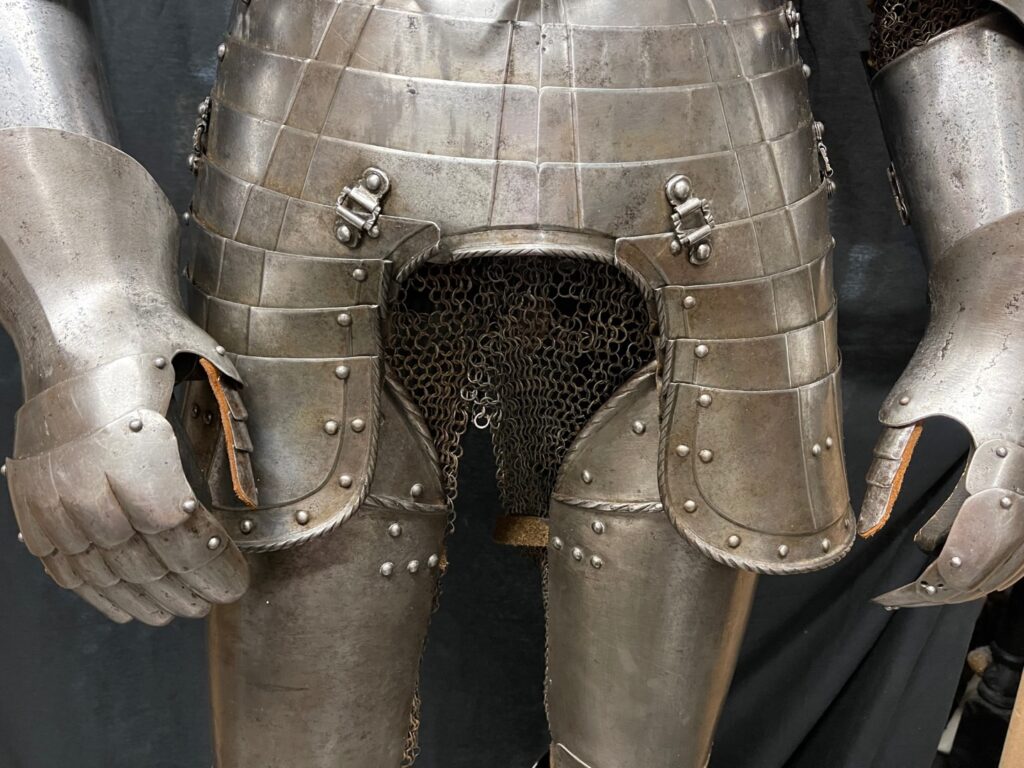1651) AN ELEGANT GERMAN COMPOSITE CAP-A-PIE ARMOR PRIMARILY CIRCA 1540: This is a very well-matched armor with a very high percentage of period pieces.
Discussion: During the first 35 years of the 1500s, fluted armor evolved (what the Victorians named Maximilian armor). The Maximilian fashion was originally an early 1505 Innsbruck reproduction of the contemporary pleating fashion found in close-fitting civilian jackets (doublets). Early breastplates in this fashion were embossed with only a few decorations.
After 1535 a much plainer fashion started evolving. The biggest and most obvious change was the lack of fluting and change in the bulbous shape of the breastplate belly. No fluting means faster and less expensive to make than the Maximilian style. However, some would argue they are equally elegant but in a minimalist form.
Description: The helmet is a rounded one-piece skull rising to a low, boldly roped medial comb fitted at the nape with a broad neck guard of two lames. The monkey face visor and bevor are attached to the skull on each side by means of common dome-headed pivots; the visor is stepped beneath its centrally divided vision slit, pierced with eleven ventilation slots arranged in two rows; short lifting peg, a visor prop with a forkhead, and push-button release for the bevor. Decorated with a roped bevor and roped neck-lame edges, visor push-button release. The breastplate formed of a rounded main plate with gussets at the arm openings. Waist lame and fauld of two separable lames and tassets, each of four lames. The backplate comprises a main plate with a pair of side plates and a waist lame flanged outwards to form a short culet cut with a shallow notch at the center of its lower edge. Long spaulders, each of seven lames, overlap outwards from the third and are articulated by transverse sliding rivets to fully articulated vambraces, formed of an open tubular upper and lower tubular cannon fitted at the inside of the elbow with a narrow lame. The knee poleyn is constructed of three lames, with the central lame projecting inwards at the front as a large, flat oval wing with a medial pucker. A pair of circular besagues, each with an applied conical boss at its center ( circa 1580). Gauntlets, each formed of a short straight-ended cuff with a strong pronounced vertical medial ridge, one metacarpal plate, and one knuckle plate (restored), three finger lames (restored). Cuisses, each formed of a gutter-shaped main plate fitted at its upper edge with a crescentic extension plate and at its lower edge with a winged poleyn. Tubular full-length greaves, each pierced at the heel with a pair of holes for attaching a spur and cut at the front with an arch to accommodate a sabaton of lames overlapping inwards; sabatons (shoes) are made from old metal but exceptionally well done. The armor is decorated throughout with boldly roped inward turns accompanied by recessed borders. Large plain elbow cops.
Conclusion: This is very well-matched armor with a very high percentage of period pieces. Owning an early armor is every collector’s dream. A cap-a-pie suit of early armor screams…strength……power….

